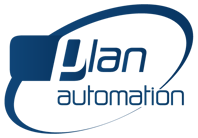MARKING & CODING
CONTINUOUS INKJET PRINTING (CIJ)
Often referred to as CIJ, continuous inkjet technology continues to be the most common method of coding products. It is estimated CIJ covers in excess of 85% of all coding and marking applications. This non-contact method of printing utilizes specialized inks that offer exceptional adhesion for a wide variety of products. Although most applications require a two-line message, CIJ can print up to five lines if required. This method of coding is suitable for almost any surface including irregular shaped products, with product rates ranging from 1 per minute to 1,500 per minute at line speeds as high as 1,300 feet per minute.
THERMAL TRANSFER OVERPRINT
Thermal transfer, typically called TTO, is a very reliable technology used to print on flexible packaging. Using a specialized ribbon with a variety of ink types, TTO uses a digitally controlled printhead surface to transfer images by making contact with the product. Often, it replaces roller coders and hot stamp printers. TTO can be used for both intermittent and continuous motion applications and very high speeds. Various models are available to print text, logos, barcodes, date codes, and virtually any image at a very high resolution. Typical applications include use on HFFS machines, VFFS machines and labelers.
LASER
LASER marking systems are typically CO2 or Fibre, and can print logos, date codes, barcodes, etc. at a very high quality using laser with high quality lenses and high speed mirrors. Most substrates can be marked with CO2 lasers including glass, PET, wood, and paperboard to name but a few. Other products that were once considered difficult for laser such as aluminum and various types of plastic can now be marked with Fibre lasers. LASER offers many advantages when compared against other methods of coding such as CIJ. There are no inks required, it is very clean, and the codes remain indelible at all times. LASER technology can be used for static applications and on moving machinery at very high speeds.

